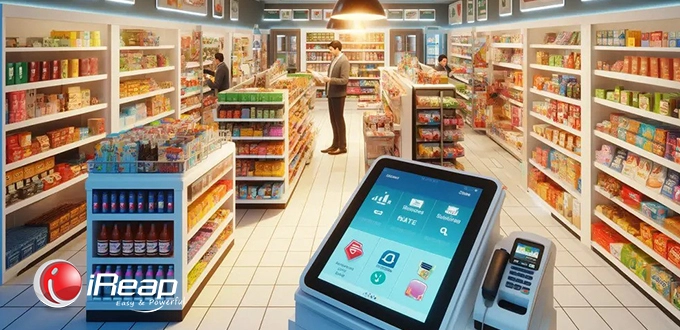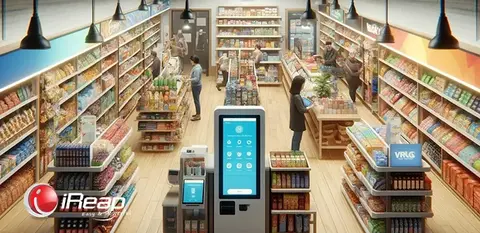
Transforming your shop from full service to self-service can bring numerous benefits, ranging from reduced operational costs to increased efficiency and customer satisfaction. However, this change also requires careful preparation and strategy.
This article will discuss the steps you need to take to successfully implement a self-service system in your shop.
Why Choose Self-Service?
Before starting, it’s important to understand why self-service can be a good option for your shop. Some of the main reasons include:
- Reduced Operational Costs: With a decreased need for staff to serve customers, you can save on wages and training costs.
- Increased Efficiency: Customers can take their own products, which can speed up transaction flow and reduce queues.
- Customer Satisfaction: Many customers enjoy the freedom to choose and take what they need without waiting for staff assistance.
Steps to Implement Self-Service in Your Shop
1. Evaluate Shop Layout
The first step is to evaluate your current shop layout. Identify areas that can be modified to support the self-service concept. Some tips for an optimal layout include:
- Easy Access Areas: Ensure frequently purchased products are easily accessible.
- Strategic Placement: Place additional or promotional products near the checkout to boost impulse sales.
- Clear Flow: Arrange products so the customer movement flow is clear and not confusing.
2. Invest in Equipment and Technology
Transforming a shop into self-service requires initial investment, especially for equipment and technology.
One solution that can help is using a cashier application like iReap POS. This application offers various features that support self-service, including:
- Real-Time Sales Monitoring: Makes it easy to monitor sales directly.
- Stock Management: Helps manage inventory more efficiently.
- Detailed Reports: Provides detailed sales and inventory reports for further analysis.
3. Training and Educating Customers
Educating customers is crucial to make them comfortable with the self-service system. Some ways to educate customers include:
- Clear Signage: Install clear and easy-to-understand instructions throughout the shop.
- Video Tutorials: Create short videos explaining how to use the self-service system and share them on social media or play them in your shop.
- Assisting Staff: During the transition period, provide a few staff members ready to help customers who encounter difficulties.
4. Implement Security Systems
Self-service also brings new challenges regarding security. Some steps that can be taken to reduce the risk of theft and loss include:
- Install CCTV: Surveillance cameras in the self-service area can help monitor customer activity.
- Sensors and Alarms: Install sensors and alarms at the exits to detect unpaid items.
- Supervisory Staff: Although reducing staff, still provide some staff to monitor the self-service area.

5. Attractive Product Arrangement
Product arrangement is key to attracting customer attention and encouraging impulse purchases. Some product arrangement strategies include:
- Attractive Displays: Use attractive racks and displays to highlight featured products.
- Clear Categories: Arrange products by category to make it easy for customers to find what they’re looking for.
- Promotional Products: Place promotional or discounted products in strategic locations to attract attention.
6. Evaluation and Adjustment
After implementing the self-service system, conduct regular evaluations to see what works well and what needs improvement. Some ways to conduct evaluations include:
- Customer Surveys: Collect feedback from customers about their experience with the self-service system.
- Sales Data Analysis: Use data from the cashier application to analyze sales trends and identify areas needing improvement.
- Direct Observation: Directly observe how customers interact with the self-service system and make adjustments if necessary.
7. Promotion and Marketing
To ensure customers are aware of the changes in your shop, conduct effective promotion and marketing. Some strategies that can be implemented include:
- Social Media: Use social media to announce the changes and provide information about the benefits of self-service.
- Special Promotions: Offer special promotions to attract customers to try your new self-service system.
- Customer Testimonials: Share testimonials from satisfied customers to attract new customers’ interest.
Conclusion
Transforming a shop from full service to self-service requires careful planning and strategy.
However, with the right steps, you can enjoy various benefits such as reduced operational costs, increased efficiency, and higher customer satisfaction.
Start by evaluating your shop layout, investing in equipment and technology, educating customers, implementing security systems, arranging products attractively, and conducting regular evaluations and adjustments.
By doing so, you can ensure a smooth transition to self-service and bring positive impacts to your business.



